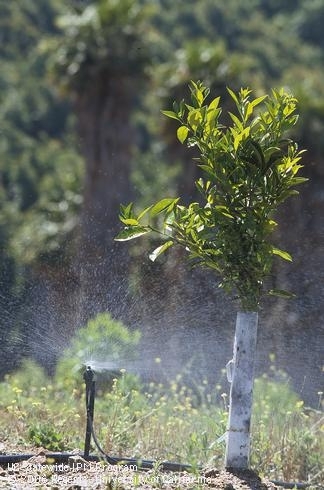This little mnemonic, or memory aid, in the title is helpful in remembering the critical levels of toxic constituents in irrigation water. The “one” stands for 1 part per million (ppm) of boron (B), the e” hundred” flags 100 ppm of sodium (Na) and (Cl) and the “thousand” represents the level of total soluble solids (TDS or slats) in water. Levels exceeding the critical values for any of these constituents can present problems for tree growers. The problems typically show themselves as tip-burn and defoliation. The B, Na and Cl are toxic elements at relatively low concentrations, but symptoms appear similar to the damage caused by high salinity.
Water that exceeds the critical levels mentioned in the mnemonic has a greater tendency to cause damage if sufficient leaching is not applied. It doesn't mean the water is impossible to use, only that greater attention needs to be made to ensure that these salts are adequately leached. High levels of these salts accumulate in the soil with each irrigation, and the salts are absorbed by the tree and end up in the leaves where they do their damage.
This promises to be another low rainfall year and the customary leaching we rely upon in winter rainfall is not going to be as effective as in customary years. Irrigation is a necessary evil. Every time we apply irrigation water we apply salts, and unless some technique is used to minimize salt accumulation, damage will result. This damage can be more than just leaf drop, but also the stress that induces conditions for root rot.
Irrigation water has been applied the last four years and many trees looked stressed. Even well irrigated orchards have leaf burn due to the gradual accumulation of salts from irrigation. It is probably necessary to irrigate in many winters. With the lack of rain problem, it may be necessary to irrigate even if there is rain. The wetted pattern that is created by a drip or microsprinkler emitter also creates a ring of salt in the outer band of the wetted patter. If there is less than an inch of rainfall to push this salt down, this salt tends to diffuse towards the tree where it can accumulate back in the root system. Orchards with even good water quality would find it advisable to run the irrigation system with the first rains. Growers with water quality exceeding one, hundred, or thousand should be especially alert to the need to manage water in low rainfall years.
